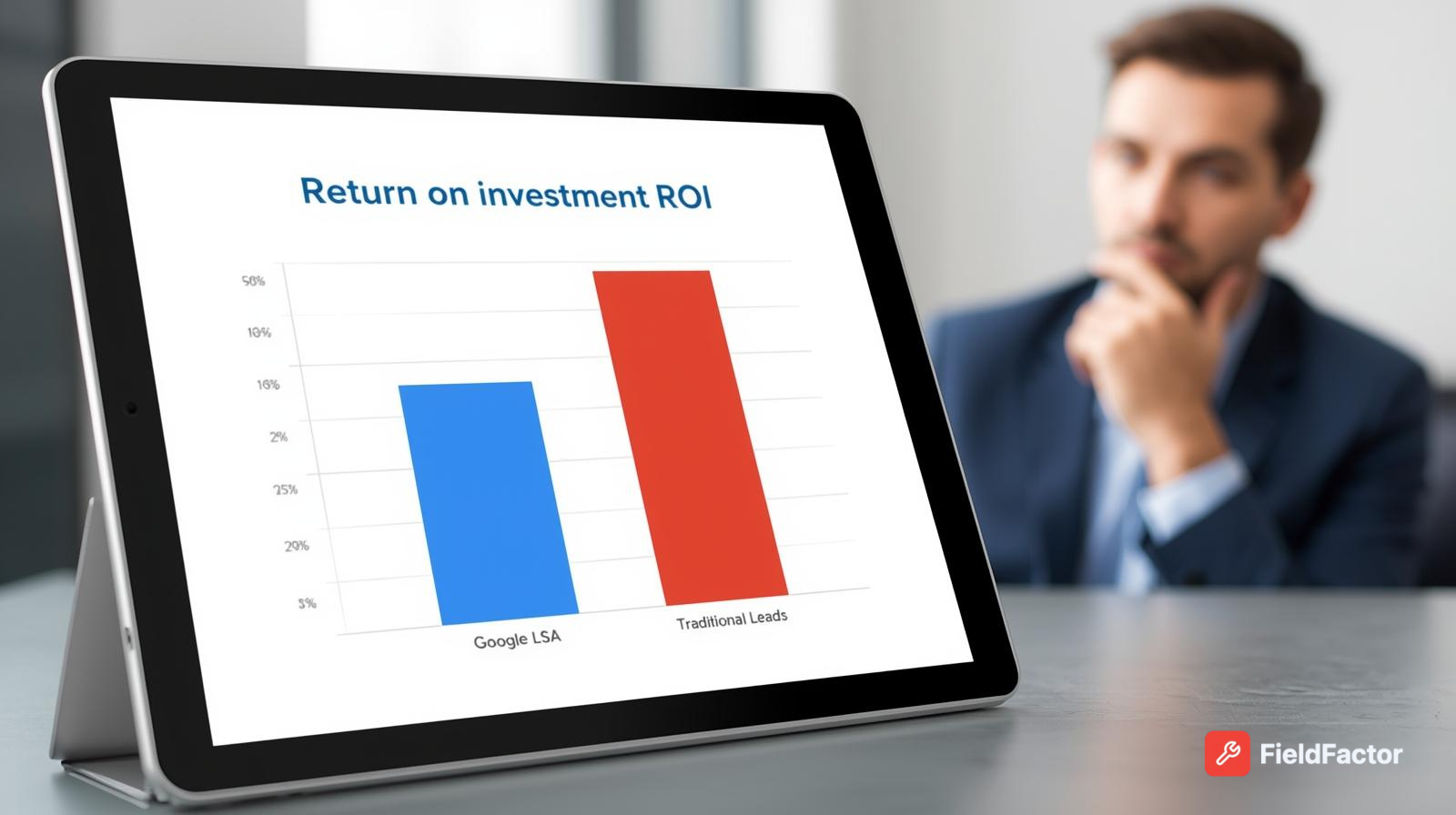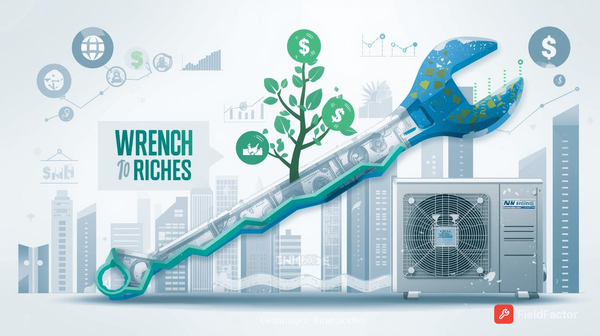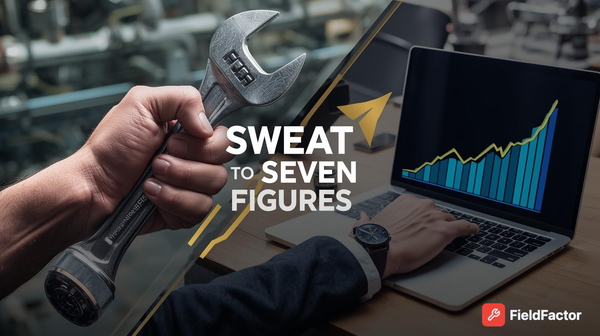📈 Benchmarking ROI: Google Local Services Ads vs. Traditional HVAC Lead Sources
HVAC owners, stop guessing! We benchmark the true ROI of Google Local Services Ads (LSAs) against traditional lead sources (HomeAdvisor, direct mail, referrals). Get the data, cut your costs, and win more jobs.

Are you still throwing marketing dollars at the same old lead sources, hoping for a better return?
In the competitive world of HVAC, the difference between a good year and a great year often comes down to one thing: efficiently acquiring high-quality leads. As an HVAC or trade professional, your focus should be on service quality, not deciphering complex ad platforms.
This comprehensive guide cuts through the noise. We’re bench-testing the real-world Return on Investment (ROI) of the industry’s most disruptive force—Google Local Services Ads (LSAs)—against the traditional lead sources you know, from pay-per-lead sites to direct mail.
We’re giving you the data, the E-A-T-backed expertise, and the actionable strategy to recalibrate your marketing mix and maximize your profitability.
The E-A-T Framework for HVAC Marketing
Google prioritizes content that demonstrates Expertise, Authoritativeness, and Trustworthiness (E-A-T). When discussing your marketing spend, this means relying on verifiable data, industry-specific knowledge, and established financial metrics.
We've built this analysis on these pillars:
- Expertise: Deep dive into Cost Per Lead (CPL) and Customer Acquisition Cost (CAC) unique to the HVAC trade.
- Authoritativeness: Use industry-standard benchmarking data and transparent calculation methodologies.
- Trustworthiness: Provide clear, actionable steps that have been proven to drive positive ROI for established HVAC firms.
Section 1: Decoding the Lead Cost - CPL and CAC
Before we compare ROI, we must establish a clear, apples-to-apples basis for comparison: Cost Per Lead (CPL) and Customer Acquisition Cost (CAC).
| Metric | Definition (HVAC Context) | Key Difference |
| CPL | The total cost of a marketing activity divided by the number of leads generated. | Leads are contacts; they might not book a job. |
| CAC | The total sales and marketing cost divided by the number of new customers acquired. | Customers are booked, revenue-generating jobs. This is the ultimate ROI metric. |
📊 Average Industry Benchmarks (Estimated)
To ground our comparison, here are typical CPL ranges for the HVAC industry.
| Lead Source | Estimated CPL Range | Quality of Lead |
| Google LSA | $25 - $55 (Pay-Per-Booked-Call) | High (Vetted, geographically specific) |
| HomeAdvisor/Angi | $50 - $120 (Pay-Per-Shared-Lead) | Medium-Low (Often shared with competitors) |
| PPC (Search Ads) | $100 - $200 (Highly Competitive) | Medium-High (Based on keyword intent) |
| Direct Mail/Print | $200 - $500 (Total Campaign Cost / Response Rate) | Low (Broad reach, low intent) |
| Referrals/Word-of-Mouth | $0 | Highest (Zero acquisition cost, high trust) |
Section 2: Google Local Services Ads (LSA) - The ROI Disruptor
LSAs changed the game by shifting the payment model from Pay-Per-Click (PPC) to Pay-Per-Lead (PPL), often focusing on a pre-screened, booked service call.
The LSA ROI Advantage
- High-Intent Placement: LSAs appear at the very top of Google’s search results, often above PPC ads and organic listings. This prime real estate captures customers with immediate, high-intent needs (e.g., "HVAC repair near me").
- Google Guarantee: The badge builds immediate Trustworthiness (T), significantly boosting conversion rates from lead to booked appointment.
- Chargeback System: You can dispute and often get credit for leads that are spam, misdialed, or outside your service area, drastically improving your net CPL and, by extension, your CAC.
| LSA Performance Metric | Typical HVAC Benchmarks |
| Call-to-Booking Rate | 60% - 85% |
| Average Job Value (AJV) | $300 - $500 (Service Calls) |
| CAC (Calculated) | $60 - $120 |
Expert Tip (E): Maximize your LSA ROI by focusing on the "Jobs" section of your profile to track performance and aggressively dispute low-quality calls.
Section 3: The Traditional Marketing Mix - Unpacking the Hidden Costs
Traditional sources often have a deceptively low CPL on the surface, but the true CAC often explodes when factoring in lead quality and operational costs.
A. HomeAdvisor/Angi and Pay-Per-Lead (PPL) Services
While you get a lead instantly, these platforms are notorious for sharing the lead with 3-5 competitors.
- Impact on CAC: Your sales team must work 3-5 times harder to close the same lead. High competition drives down your closing rate (conversion rate from lead to customer), skyrocketing your CAC.
- Trust Factor (T): Customers who feel spammed by multiple contractors often suffer from choice paralysis or resort to price shopping, eroding profit margins.
B. Direct Mail, Print, and Radio (Outbound Marketing)
These sources are vital for brand awareness but struggle with direct ROI measurement.
- The Hidden Cost: You pay for impressions (people seeing the ad) rather than intent (people needing the service now).
- ROI Factor: The response rate is typically low ($<1\%$). While a single, high-value installation job could "pay" for a campaign, the predictability and scalability are poor compared to LSA.
Section 4: The Ultimate Benchmarking - ROI Comparison
The real ROI comparison must look at how much revenue is generated per dollar spent, not just the cost of the initial lead.
Scenario: A mid-sized HVAC company with a 30% closing rate on high-quality leads and a $400 Average Job Value (AJV).
| Lead Source | CPL (Net) | Closing Rate | CAC | AJV | ROI (AJV/CAC) |
| Google LSA | $40 | 30% | **$133** | $400 | 3.0x |
| PPL Services | $80 | 10% (Shared Lead) | **$800** | $400 | 0.5x |
| HVAC SEO (Organic) | $0 | 40% | **$0** | $400 | ∞ (High Investment, Zero CAC) |
The Key Takeaway:
Google LSAs offer the best predictable and scalable ROI outside of your direct referrals and high-performing organic (SEO) channels. Their structured vetting and chargeback system dramatically lowers the risk associated with pay-per-lead models.
Section 5: Authoritative Strategy - Winning the LSA Game
To make LSAs your number one channel, you need an operational strategy that leverages their design.
1. Optimize for the Human Element
LSAs are an Authoritative (A) tool, but they still rely on your team:
- Speed is Service: You must answer LSA calls immediately (within 5 seconds). Missed calls often result in the customer calling the next contractor on the list.
- Reviews are Currency: Actively prompt LSA customers for Google Reviews. Your star rating is the #1 factor in LSA lead volume. A low rating is a guaranteed way to increase your CAC.
2. Strategic Bidding and Budgeting
Unlike traditional PPC, LSA bidding is less about keywords and more about budget allocation.
- Initial Aggressiveness: Start with a higher weekly budget to establish a presence and collect initial data.
- Geographic Focus: If your budget is tight, focus your service area only on your most profitable zip codes to maximize local ROI.
3. Integrate LSAs with Your CRM
Expertise (E) is in the data. Treat LSA leads like any other channel in your Customer Relationship Management (CRM) system.
- Required Fields: Always track the LSA-specific metrics: Call ID, Disputed Status, and Final Job Status.
- Full-Cycle ROI: Only by tracking the lead from call to paid invoice can you calculate the true CAC that drives your business decisions.
Conclusion: Recalibrate Your Mix for 3.0x ROI
For the modern HVAC professional, the marketing mix needs a serious recalibration.
While organic traffic and customer referrals remain the "gold standard" for zero-CAC leads, Google Local Services Ads are the most efficient, scalable, and high-intent paid channel available today. By shifting budget away from low-conversion, high-competition PPL services and into the controlled environment of LSAs, you are not just spending money—you are investing in a verified, high-ROI asset.
Stop guessing. Start benchmarking.





